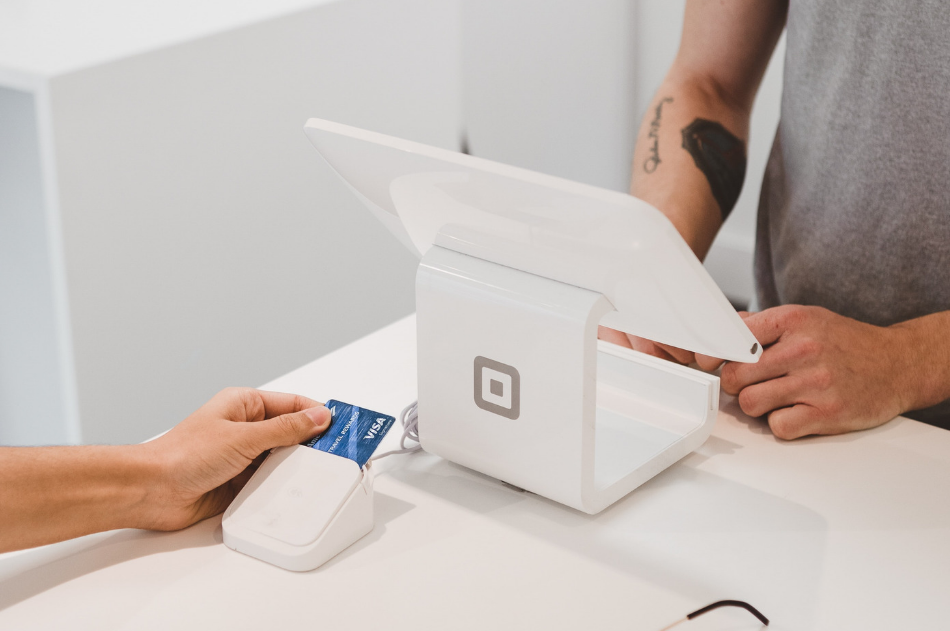In marketing, the term touchpoint is defined as any form of interaction a consumer has with a business, and now, more than ever, consumers have so many platforms and ways to communicate, gain information and engage with brands. From looking at ads in print magazines to reading reviews on blogs in the virtual space, the average consumer goes through many stages before reaching the holiest of holy grails for any business: purchase.

Ah, the good old days when gaining customers was almost as black and white as the television sets that aired commercials. Back then, all that was needed was a happy, wholesome family eating together at a dinner table in one of those ads to sell a million cans of soup directly in a grocery store. Even further back, a simple poster would have done the job (don’t come for me, all you marketers out there. I’m not dismissing the art of traditional marketing. Go here to read my coverage on how psychological marketing can be, then take a deep breath and come on back).
But today there are so many ways to reach the audience and so many more steps to gain their custom. Any brand worth its salt has to include visibility at as many of these touchpoints across as many mediums as possible, as part of its content marketing strategy.
Touchpoints exist at every stage of the consumer purchase funnel. To an extent, in terms of marketing, one can’t really exist without a nod to the other. And since content is at the core of both, all three function in a sort of ecosystem. Let’s go through the six main stages of the purchase funnel to see how they work together.
STAGE 1: AWARENESS
Like the film Inception, the aim at this stage of the purchase funnel is to plant an idea in the minds of consumers that grows and propels them further down the funnel. Touchpoints at this stage are arguably the most important. It’s like nurturing a newborn: you provide everything it needs to grow healthy, get a great job, and pay you back for sleepless nights and time and money invested. Content marketing is essential here because the only way the consumer will know you exist is if you tell them you do.
The vast number of outlets from which consumers can get information may seem daunting for brands and marketers, but this is to be embraced. It simply means there are more ways to reach potential customers with your message. At this stage, content marketing can include the traditional route (TV, radio, billboards, etc), but now – more importantly – the brand’s website, blogs, social media platforms, podcasts, content sharing platforms, content discovery platforms, apps, voice search, chatbots and more. With the right content marketing, the consumer won’t be able to escape your presence in whatever market you operate.
Say you’re a brand that sells top-quality prescription glasses (I use these myself – we have to get our inspiration from somewhere). You could put together a content marketing strategy that includes:
- A podcast on the history of prescription glasses
- A blog that covers the best types of glasses for different face shapes
- A fun social media quiz on different glasses brands or celebrities who use prescription glasses
- An SEO-friendly hero piece that delves deep into how prescription spectacles are made, including fun facts
- An informative piece specifically for content discovery platforms, such as StumbleUpon and Buzzsumo
- Going into forums such as Reddit and Quora to answer relative questions people have posted or to contribute to discussions
What all this does is give you visibility at plenty of touchpoints at this stage of the purchase funnel. If a consumer Googles ‘prescription glasses’ (a keyword that gets up to 14,800 searches per month on average), your brand will be available with content on every sort of online touchpoint, meaning you have sown the seed of awareness.
STAGE 2: INTEREST
This is the stage of the purchase funnel when the picture of a user becomes clearer to a brand. Let’s continue using our prescription glasses business as an example (let’s call it Acme Glasses). When our user Googled ‘prescription glasses’, we had no real idea of the context of this search. Was it an image search? Was she doing general research not related to buying? Does she use glasses already? Has she noticed her sight deteriorating and seeing (no pun intended) what this prescription glasses malarkey is all about? Is she (please, please let it be this) looking to make a purchase right away?
No matter the context – because we’ve laid the groundwork by providing content via the above content marketing strategy – we have visibility at any touchpoint, including at the interest stage of the purchase funnel. The user at this stage is hinting at being interested in purchasing glasses but still researching. Acme Glasses has to come across as trustworthy, a brand that is an authority in its field. Brands are now tribes, so Acme Glasses has to start building a relationship with the consumer to make her feel part of the tribe. Follows on Twitter and Instagram, subscriptions on YouTube, likes on Facebook, and blog shares are all ways the consumer indicates her interest, but they are also opportunities for the brand to build a relationship. Our potential customer now has a ‘face’, so to speak.
STAGE 3: CONSIDERATION

At this stage, we know for sure that the consumer is interested in purchasing from our brand (hurray!). But our work is not done. We’ve pulled her in with our fantastic content marketing, and now we can start giving her a little push. Touchpoints here include multiple website visits, comments on blog posts, mentions on Twitter, YouTube video views, Instagram likes, brand-related hashtags, etc.
Thanks to our efforts, the consumer has gained a level of trust in us, and we have been able to capture her email details, another touchpoint. But rather than flood her with sales content, we provide her with informative newsletters, which just happen to include a mention of deals we have going. We tell her about alternatives to glasses, such as laser treatment or contact lenses, and services we provide, so she knows she has options and now has the information on what the options are. We also offer her a free eye test.
STAGE 4: INTENT
High fives and exploding fist bumps are in order. Our potential customer has added an item to her basket on a touchpoint – our website! But let’s keep the champagne on chill – she hasn’t made the purchase yet. At this stage, her intent is clear, but perhaps she still needs a bit of a push? We can use content at a few touchpoints here to do this:
- We could send her an email saying we’ve noticed she hasn’t checked out her basket item yet. Offering her a discount or an easier payment method is a tactic we could use. A piece of content covering the exact spectacle type she placed in her basket is also a great way to give her that little nudge
- We share a YouTube video of a model or influencer wearing similar glasses
- We share content that covers the prescription-glasses journey of a previous/current customer, who has a similar customer profile to hers
- Another touchpoint is display advertising. Using cookies she has accepted, we show display ads for the glasses she is interested in across multiple websites as she browses the internet
Notice that, even at this stage, great content is still important. Content is still king.
STAGE 5: EVALUATION
From a brand’s perspective, this might as well be called the Hold Your Breath stage. For the consumer, it’s one more evaluation before taking the final step. In some sectors, this is an understandable/sensible stage for the consumer to go through. Making a decision on the type of car, home or family-holiday package to go for is not something you rush. A pair of glasses might not be as costly, but it’s all relative.
At this stage, it’s not inconceivable that the consumer does another mini version of the four prior stages just to make sure. She will likely be exposed to all the above touchpoints again. But because we have done such a great job in our content marketing and placed content on a smorgasbord of platforms, we will be right there once again, even if she alters her keyword search slightly on Google. As a final push, we could send her an email explaining why Acme Glasses is the best in the business and include reviews from genuine customers. Furthermore, we can use a countdown widget embedded in the email to show the limited time an extra discount (perhaps half price on prescription sunglasses) is available for.
STAGE 6: PURCHASE

Bring out the champagne glasses and toast to prescription glasses! Our girl has finally clicked the checkout button and made the purchase. Not only do we have a ‘Thank you for your purchase’ page that truly shows our gratitude, we also send an email confirmation that includes points or discounts for any future purchases.
You can see how these three aspects of marketing work together to achieve the ultimate goal.
Repeat business, loyalty, and advocacy are stages of the purchase funnel that goes beyond purchase and should not be overlooked. Continuous use of great content marketing that is available at all touchpoints mentioned above is essential in achieving these three stages. At content marketing agency The River Group, we work with our clients to make sure they are covered on multiple touchpoints at any stage of the purchase funnel by creating great content. Take a look at our Clients and Services pages to see examples of our work.



